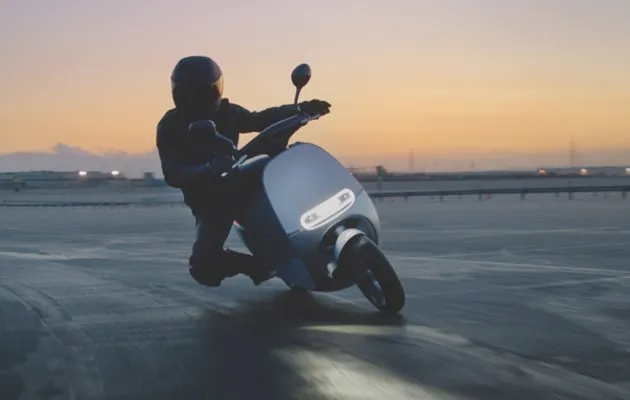With the news that the Gogoro Smartscooter is set to launch in Europe next year, we take a look at what people are calling the ‘Tesla of scooters’.
The Gogoro was unveiled at the Consumer Electronics Show in Las Vegas in January 2015, and it might just be the future of urban transport. TheGogoro Smartscooterisn’t the first electric scooter by any means, but its sleek, stylish looks and innovative swappable battery system make it the mostly hotly tipped model right now. It’s also the first that’s been specifically designed to address the transport needs of denizens of ‘megacities’ – that is, cities with a population of over 10 million.
Two entrepreneurs called Horace Luke and Matt Taylor, whose backgrounds lie not in the automobile industry but in consumer electronics, founded Gogoro in 2011. Both Luke and Taylor previously worked at Microsoft and HTC, while their individual CVs include the likes of Motorola and Nike. Gogoro has received over $150m in funding from investors including HTC founder Cher Wang, while a key partner is Panasonic, which has helped to design the Smartscooter’s unique battery/charging system.
Technical specifications
Max speed:95km/h
Max horsepower:8.58hp @ 3,250rpm
Acceleration (0-50km/h):4.2 seconds
Range:100km approx
Weight 94kg:(112kg with batteries)
Dimensions:1,730 x 690 x 1,215mm
It’s the innovation in this area that makes the Smartscooter so interesting. With most electric vehicles, around 40 per cent of the purchase cost simply pays for a large battery that requires regular charging. Not so with Smartscooter: instead, you buy the bike outright for the price of £2,600, then lease charged batteries from ‘GoStations’ located all across the city, much as you buy a mobile phone handset outright and then lease airtime from a network provider. When your batteries – they come in pairs – start to run low, you simply pull up at the next GoStation and exchange themfor a fresh pair.
The benefits in terms of keeping you moving are obvious, but there’s more to Gogoro’s power system than that. There are 30 sensors on the bike itself and 25 in the battery, all connected to the cloud and a smartphone app. They monitor everything from average speed to your riding position. That way, when you want to swap batteries, the GoStation knows whether you’re a speed merchant who’s definitely going to need that fully charged, brand new cell, or a cautious commuter type for whom an older battery that’s only 85 per cent full will do just fine. The same sensors will also alert you if any part of your Smartscooter needs attention, reducing the likelihood of mechanical failure and improving safety.
You can only withdraw a fresh battery from a GoStation after you’ve put a dead one in first, and each battery ‘loan’ is centrally recorded – so if anyone should steal your Smartscooter, their whereabouts will be instantly known the next time they try and put in new batteries. Each pair of batteries will give you a range of around 100km (60 miles) from fully charged, and batteries will be withdrawn after 500 charging cycles – the point at which capacity starts to drop significantly – to be re-used in data centres, homes and offices. Then, towards the end of their life, they’ll be donated to charity projects in developing nations.

Taipei in Taiwan is the world’s first city to be kitted out with a full city-wide network of GoStations, and have recently beenawarded $30mby the country’s National Development Fund. The news came just days before Gogoro announcedAmsterdam will be the first city in Europeto welcome the electric scooters. The future success of the Smartscooter remains uncertain, of course, but just look at the thing: if we’re ever going to ride off into azero-emissions sunset, then that’s the two-wheeler we want to do it on.
This feature first appeared in theAugust 2015issue ofBBC Focus Magazineand has been edited for the web
Follow Science Focus onTwitter,Facebook, Instagramand Flipboard
